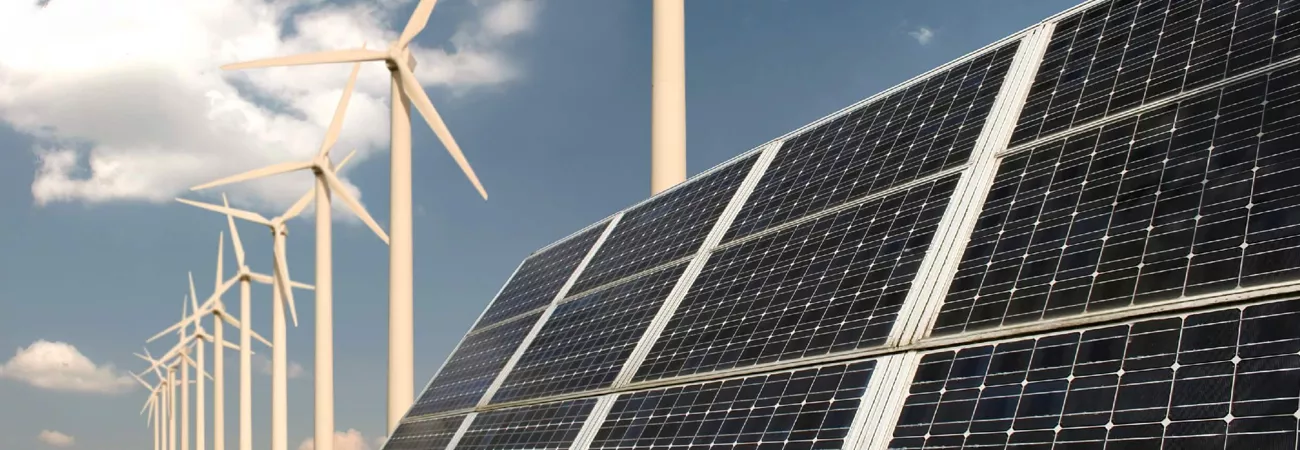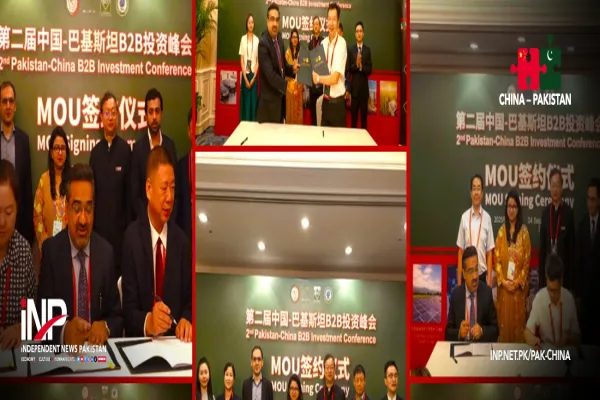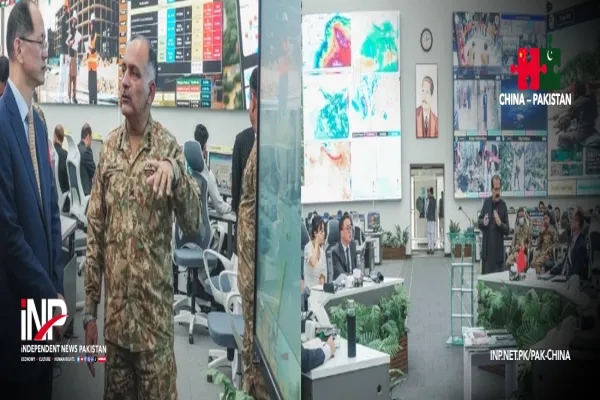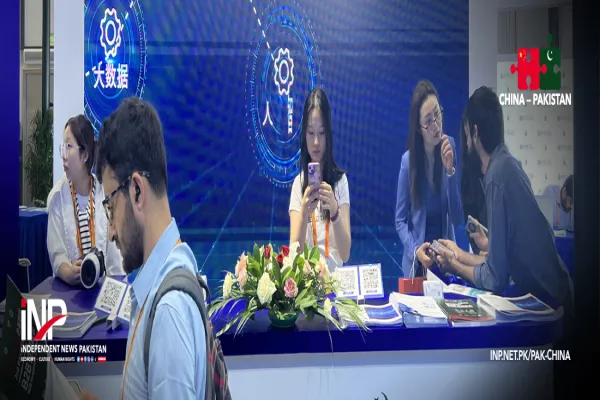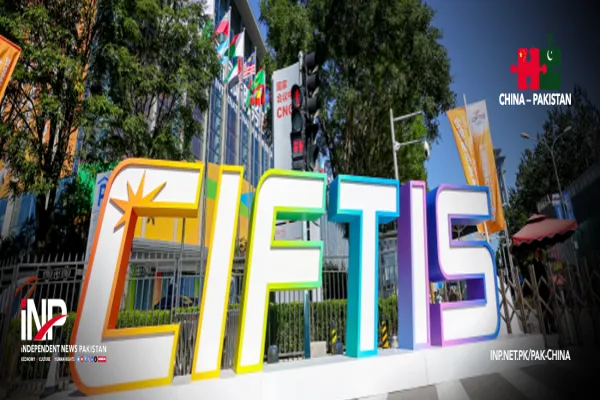i NEWS PAK-CHINA
CPEC 2022 is going to be wound up with spillover opportune in Pakistan's green energy landscape underpinning the nation's plan to boost the share of its electric power that comes from renewable to 30 percent by 2030. According to a report published by Gwadar Pro on Sunday, iminating year, China-Pakistan green electricity romanticism has blossomed that helped CPEC energy-mix momentum gain perpetuality igniting the ongoing spark and future projects in the sphere of hydro, wind, solar, and others will transform Pakistan environment outlook.
Anchoring Pak-China new green corridor announced in 2022, green electricity bond between the two nations will also support Pakistan to meet its Climate targets and UN sustainable development goals. When renewable energy is talk of the town across the world, Belt & Road Initiative of China is not behind in contributing towards green revolution. On similar lines, CPEC energy investments from China are now focusing on green energy. It won't be an exaggeration if we say that 2022 brought a new era in Sino-Pak cooperation in renewable energy, as we have witnessed extremely encouraging signs in green energy sector between the two friendly nations.
Until now, renewable energy sources make up a very minor fraction of Pakistan's overall power generation mix. According to a recent report of the National Electric Power Regulatovry Authority, the installed capacity for wind and solar accounts for roughly 4.2% (1,831 MW) and 1.4% (630 MW) of a total of 43,775 MW, respectively. China is already the biggest investor in green energy in Pakistan. Currently, out of the $144 million in foreign investment in solar PV plants in Pakistan, $125 million is from China, accounting for nearly 87% of the total.
Thanks to Chinese investments, a few weeks ago Federal Power Minister Khurram Dastgir Khan inaugurated two new wind energy projects in Jhimpir, Thatta District, Sindh, with an aim to produce cheaper and clean electricity through indigenous energy sources.
Wind projects in this region have been one of several renewable energy projects to have received Chinese investment in recent years. Around 90 kilometers from Karachi, Jhimpir is the heartland of the country's largest 'Wind corridor', which has the potential to produce 11,000 megawatts (MW) of energy from green resources.
Another major development took place in Wind Energy promotion when Beijing-based multinational wind turbine manufacturer, Goldwind corporation launched the first-of-its-kind solution factory in Pakistan. The Solution Factory aims to develop localized solutions for Pakistani wind power plants.
Prime Minister Shahbaz Sharif recently announced the quick installation of 10,000 MW of solar energy throughout the country to lessen reliance on imported fuel. Experts believe that China will play a big part in installing Solar Power projects as it has previously installed a mega Quad-e-Azam Solar Park.
Furthermore, China is also building the cheapest solar material, therefore domestic and commercial consumers prefer Chinese solar kits in Pakistan. Regional Sales Manager of Longi Solar, Li Xiaopening said that said that "we will focus on the distributed solar power in Pakistan by providing more solar panels on roofs for residents as well as industrial and commercial buildings."
The company is also customizing the operation and maintenance of solar devices amid high temperatures, which plagued Pakistan this summer, to adapt its goods to the escalating climate change. There will be measures in place to protect the solar gadgets when a flood occurs after the prediction and alert of extreme weather conditions. During mid 2022, Power Division of Pakistan decided that the 300MW imported coal-based power facility at Gwadar will be abandoned, to replace it with a solar project.
China has also been investing in Pakistani hydro power sector for the last several years under CPEC and otherwise. According to a recent report in Pakistani media, China is prepared to assist Pakistan with cleaning its Tarbela Dam using steel straw. Chinese firms will be clearing silt from the nation's largest reservoir using a 120-meter steel rod. Tarbela Dam is one of the largest earth and rock-filled reservoirs in the world and the largest project to develop water resources, according to Pakistan's Water and Power Development Authority.
2022 also marked a breakthrough as mega CPEC hydro power projects have started its operations. China Three Gorges Corp's first hydroelectric joint venture under CPEC, the Karot hydropower project, began commercial operation during June 2022. The project, which has a total installed capacity of 720 megawatts and is situated on Jhelum River, is the first significant hydropower investment project under CPEC.
The hydroelectric power plant, whose construction began in April 2015, is anticipated to produce about 3.2 billion kilowatt-hours of clean electricity annually and supply Pakistan with reliable and affordable energy to suit the needs of its approximately 5 million population.
Other CPEC-related hydropower projects include Kohala Hydropower Project, Suki Kinari Hydropower Project, and Azad Pattan Hydropower Project. Furthermore, Diamer Bhasha, Neelum Jehlum, Mohmand, and Dasu Dams are also contributing towards Chinese commitment to provide clean and affordable energy in Pakistan.
China is also assisting Pakistan in establishing a waste-to-energy facility in Lahore after research revealed that the nation has enormous potential to produce electricity from garbage by utilizing cutting-edge technology. The proposed plant is anticipated to have a 40MW installed capacity. It will have two turbine generators with a combined output of 20MW each.
During the recent visit of Pakistani PM Shehbaz Sharif to China, the Chinese side appreciated the efforts of the Pakistani government to vigorously develop renewable energy projects including solar projects which aligns with the green, low carbon and environmental development of energy sector, and encouraged participation of Chinese companies in this endeavor.
Leading Chinese companies have shown keen interest in investing in Pakistan's solar, water and other infrastructure projects during the visit of Prime Minister Shehbaz Sharif to Beijing. The prime minister invited Chinese corporate heads to come to Pakistan and pour capital into the government's comprehensive solar power programme aimed at generating 10,000 megawatts of electricity.
Pakistani intellects and researchers are also playing their part in enhancing Sino-Pak cooperation in green energy. In mid 2022, "Green China Pakistan Economic Corridor (CPEC) Alliance" was announced by the Pakistan-China Institute (PCI) and Sustainable Development Policy Institute (SDPI).
The Alliance was created with the intention of supporting and accelerating this change within Pakistan and BRI. Members of the Alliance include investors, civil society, and environmental experts. Similarly, Energy Minister of Pakistan, Mr. Khurram Dastgir, is also confident that Pakistan's future energy landscape will be based on the utilization of indigenous renewable sources including hydro, solar, wind, coal and nuclear, adding that China is the most crucial and valuable partner for the country in tapping clean energy potential.
Credit: Independent News Pakistan-INP



